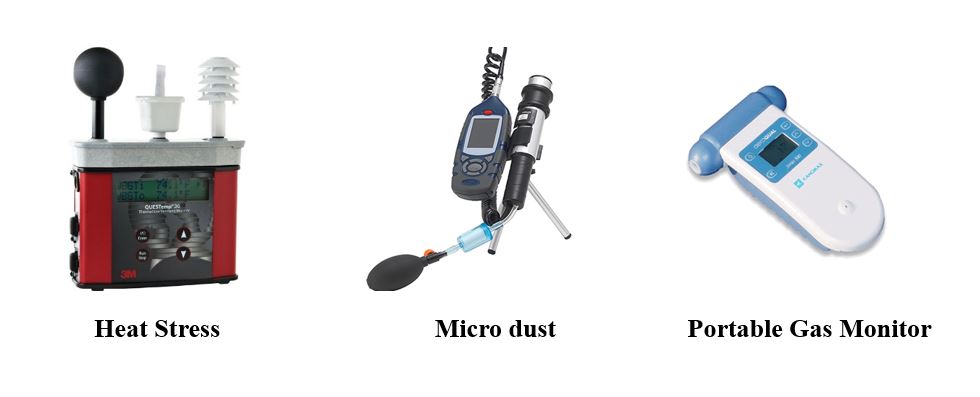Facilities
The National Water Research Center (NWRC) has powerfull facilities and many tools as:
Soil Mechanics and Foundation Engineering Laboratory:
This lab is equipped with most of the major apparatus and standard devices which are used to conduct the standard soil tests including mobile mechanically controlled drilling rigs provided with the necessary accessories to conduct the Standard Penetration Test (SPT), Static Cone Penetration Test (SCPT), a field Vane shear device, and mobile Dutch cone penetrometer (20 tons).
Structural Modeling Laboratory:
This lab is established to support the research programs and studies of the unconventional problems where a physical and/or numerical model is needed to investigate the soil-structure interaction and suggest the suitable solutions. The lab is also used to monitor the behavior of both existing and new structures during and after construction to make sure of their performance according to the design assumptions. The lab is equipped with field monitoring instruments such as piezometers to measure the pore water pressure, inclinometers and Soundex systems to measure horizontal and vertical displacements, and strain gages to measure the strains. The monitoring tools are equipped with the required data acquisition systems and software.
Materials Properties Laboratory:
This lab staff is capable of testing the constructional materials to determine its properties both in the field and laboratory. Staff is also capable of designing concrete mixes, suggesting quality assurance and quality control programs and executing them. The lab is equipped with the needed equipment and tools to carry out the standard tests for fresh and hardened concrete and mortar such as, a Universal Testing Machine (UTM), compression machines with different capacities, humidity chamber, as well as apparatus for nondestructive tests such as Schmidt hammer and ultrasonic apparatus.
Structures Dynamics Laboratory:
This lab is established to support the research programs and consultation problems such as investigating the dynamic behavior of structures, system identification, damage detection, soil behavior after shaking and modal analysis, etc. The lab is also used to carry on experimental investigations on structures subjected to dynamic forces for purposes of design and evaluation needs. The lab is equipped with field monitoring instruments such as different types of accelerometers, velocity-meter, impact hummer and shaking table. The monitoring tools are equipped with the required data acquisition systems and software.
Geosynthetic Testing Laboratory:
This lap is capable of testing the Geosynthetic materials to determine its properties in the lab. The lab is equipped with the needed tools such as, a Universal Testing Machine (UTM), Apparent Opening Size apparatus (AOS), thickness device, permittivity apparatus, Xenon-Arc type apparatus and bursting strength tester.
Water Quality Laboratories:
Central Laboratory for Environmental Quality Monitoring (CLEQM) houses the latest-line technologies in our 1500 m2 of totally environmentally controlled laboratories that includes inorganic and organic chemistry, microbiology, soil, biology & environmental indicators analytical departments in addition to QA/QC and laboratory information management systems (LIMS) departments. The CLEQM facility includes state-of the-art equipment as ICP-MS, ICP-OES, IC, GC-MS, LC-MS/MS, Real time (RT-PCR), high magnification power microscope, atomic adsorption …etc.). Specialized in-house analytical methods tailored to the client’s needs also can be developed.
Physical hydraulic modeling laboratory:
The Hydraulic Research Institute (HRI) builds and operates the physical Models since 1947 according to the needs of the different clients. Clients from around the world have come to HRI's laboratory to witness model testing, and to participate in every phase of the hydraulic design process: from conceptual design through the refinement of final design details. HRI engineers work side-by-side with our clients in the laboratory, developing, observing and documenting the performance of alternative project designs to ensure that the final design for the project will meet performance, technical and economic requirements. A very high percentage of our modeling work is performed for repeat clients. We take this as a testament to the utility of our modeling efforts in support of our clients, whether they are designers, decision makers or regulatory authorities. Our ability to offer a hybrid approach, combining physical modeling with numerical modeling and field observations, results in a very high degree of client confidence in final results produced and contributes to a very high degree of project credibility with decision makers, regulatory authorities, public participants and other project stakeholders.
Groundwater exploration survey:
There are a wide range of equipment and devices for soil boring and groundwater surveying processes including geophysical, electric and magnetic surveying as well as numerical models for investigating the potential locations of groundwater withdrawal and groundwater quality monitoring.
Aquatic Weeds Harvesting:
The NWRC has a comprehensive understanding and innovative tools and equipments for determining the affected locations with intensive aquatic weeds, and methods of removal and utilization of the harvested weeds for biogas production.
Land and Water Surveying:
NWRC has devices and tools for various fields of modern surveying technology and satellite images processing and analysis to produce various maps for both land and water including GNSS geodetic receivers, Hand-Held GNSS navigation receivers, Digital Levels, Tide Gauges, Optical Levels, Relative Gravity Meters, Total Stations, Modern Computer Lab.

















